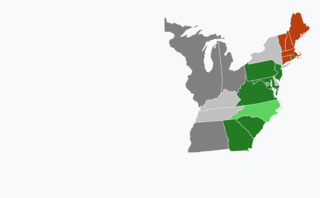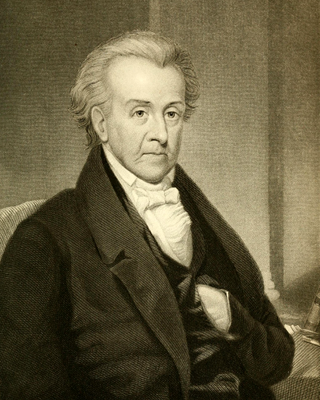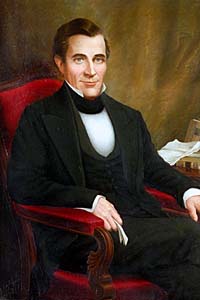
The 1792 United States presidential election was the second quadrennial presidential election. It was held from Friday, November 2, to Wednesday, December 5, 1792. Incumbent President George Washington was elected to a second term by a unanimous vote in the electoral college, while John Adams was re-elected as vice president. Washington was essentially unopposed, but Adams faced a competitive re-election against Governor George Clinton of New York.

The 1796 United States presidential election was the third quadrennial presidential election of the United States. It was held from Friday, November 4 to Wednesday, December 7, 1796. It was the first contested American presidential election, the first presidential election in which political parties played a dominant role, and the only presidential election in which a president and vice president were elected from opposing tickets. Incumbent vice president John Adams of the Federalist Party defeated former secretary of state Thomas Jefferson of the Democratic-Republican Party.

The 1800 United States presidential election was the fourth quadrennial presidential election. It was held from October 31 to December 3, 1800. In what is sometimes called the "Revolution of 1800", the Democratic-Republican Party candidate, Vice President Thomas Jefferson, defeated the Federalist Party candidate and incumbent, President John Adams. The election was a political realignment that ushered in a generation of Democratic-Republican leadership. This was the first presidential election in American history to be a rematch.

The 1808 United States presidential election was the sixth quadrennial presidential election, held from Friday, November 4, to Wednesday, December 7, 1808. The Democratic-Republican candidate James Madison defeated Federalist candidate Charles Cotesworth Pinckney decisively.

The 1816 United States presidential election was the eighth quadrennial presidential election. It was held from November 1 to December 4, 1816. In the first election following the end of the War of 1812, Democratic-Republican candidate James Monroe defeated Federalist Rufus King. The election was the last in which the Federalist Party fielded a presidential candidate.

The 1800–01 United States House of Representatives elections were held on various dates in various states between April 29, 1800, and August 1, 1801. Each state set its own date for its elections to the House of Representatives before the first session of the 7th United States Congress convened on December 7, 1801. They were held at the same time as the 1800 presidential election, in which Vice President Thomas Jefferson, a Democratic Republican, defeated incumbent President John Adams, a Federalist. Elections were held for all 105 seats, representing 15 states.

The 1802–03 United States Senate elections were held on various dates in various states. As these U.S. Senate elections were prior to the ratification of the Seventeenth Amendment in 1913, senators were chosen by state legislatures. Senators were elected over a wide range of time throughout 1802 and 1803, and a seat may have been filled months late or remained vacant due to legislative deadlock. In these elections, terms were up for the senators in Class 1.

United States gubernatorial elections were held in 1801, in 13 states.

United States gubernatorial elections were held in 1802, in 12 states, concurrent with the House and Senate elections.

The 1801 New Hampshire gubernatorial election took place on March 10, 1801. Incumbent Federalist Governor John Taylor Gilman won re-election to an eighth term, defeating Democratic-Republican candidate Timothy Walker in a re-match of the previous year's election.

The 1820 New Hampshire gubernatorial election was held on March 14, 1820.

The 1821 New Hampshire gubernatorial election was held on March 13, 1821.

The 1822 New Hampshire gubernatorial election was held on March 12, 1822.

The 1823 New Hampshire gubernatorial election was held on March 11, 1823.

The 1812 New Hampshire gubernatorial election was held on March 10, 1812.

The 1817 New Hampshire gubernatorial election was held on March 11, 1817.

The 1813 Connecticut gubernatorial election took place on April 12, 1813.

The 1810 Connecticut gubernatorial election took place on April 9, 1810.

The 1802 Georgia gubernatorial special election was held on 3 November 1802 in order to elect the Governor of Georgia following the resignation of Governor Josiah Tattnall due to declining health. Democratic-Republican candidate and former member of the U.S. House of Representatives from Georgia's at-large congressional district John Milledge defeated Federalist candidate and candidate for Governor in 1801 Thomas P. Carnes in a Georgia General Assembly vote.

The 1807 Georgia gubernatorial election was held on 10 November 1807 in order to elect the Governor of Georgia. Incumbent Democratic-Republican Governor Jared Irwin defeated Federalist candidate and former member of the U.S. House of Representatives from Georgia's at-large congressional district Benjamin Taliaferro in a Georgia General Assembly vote.


















